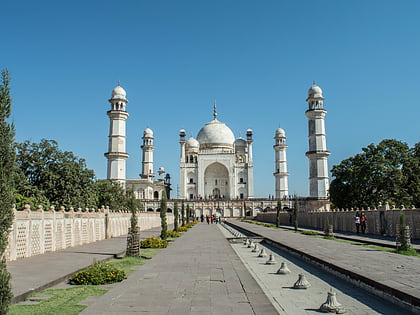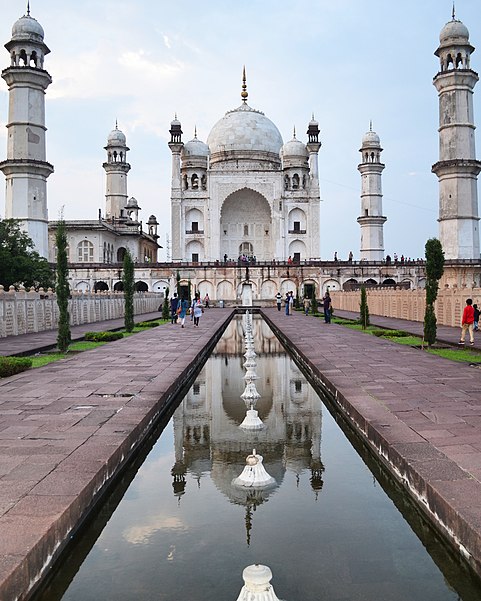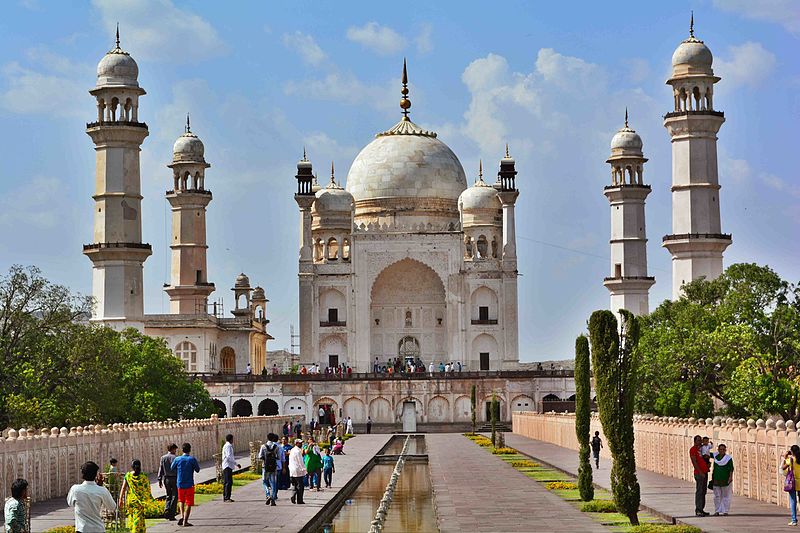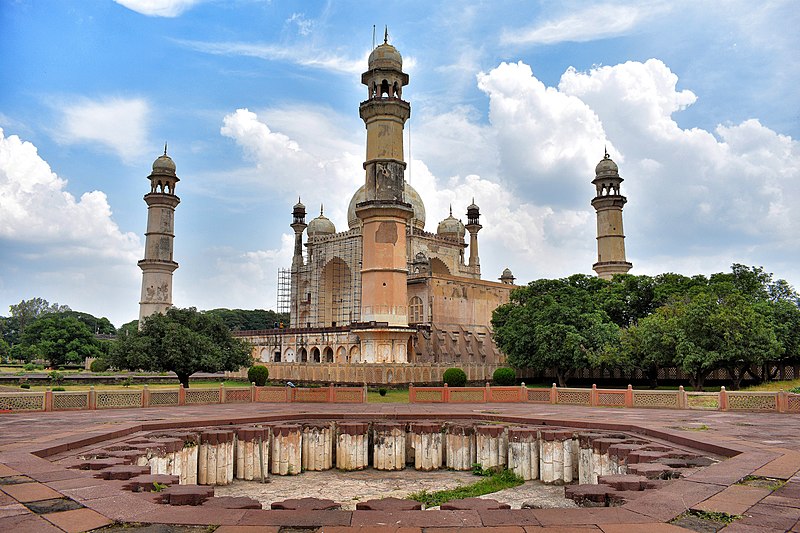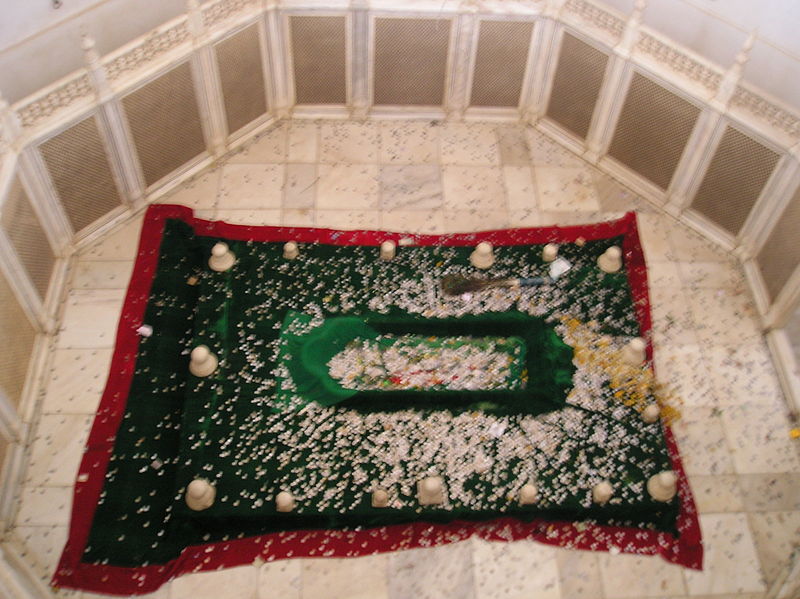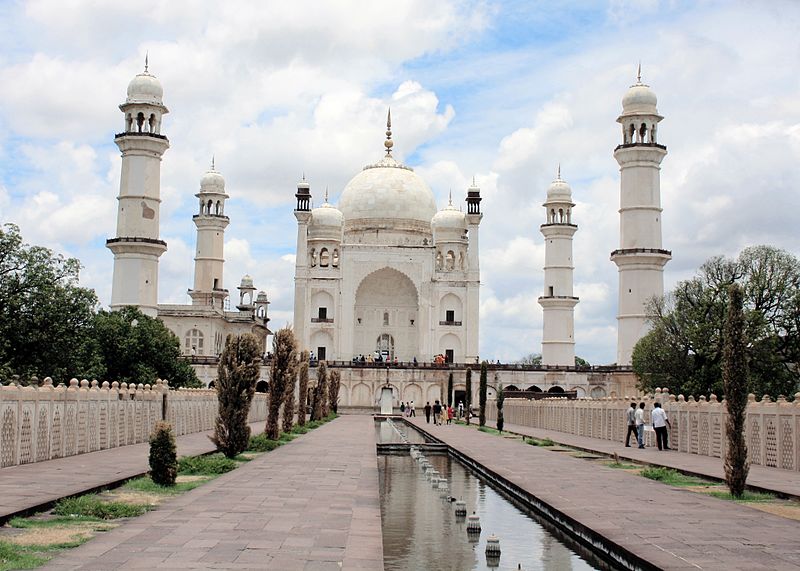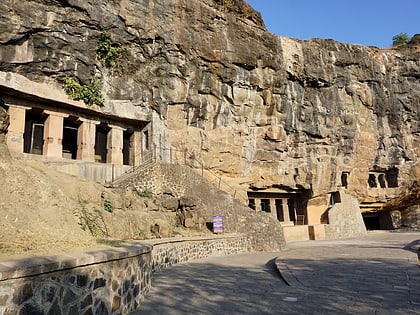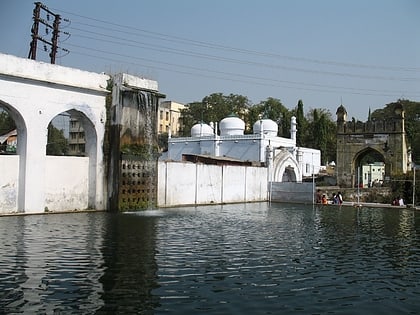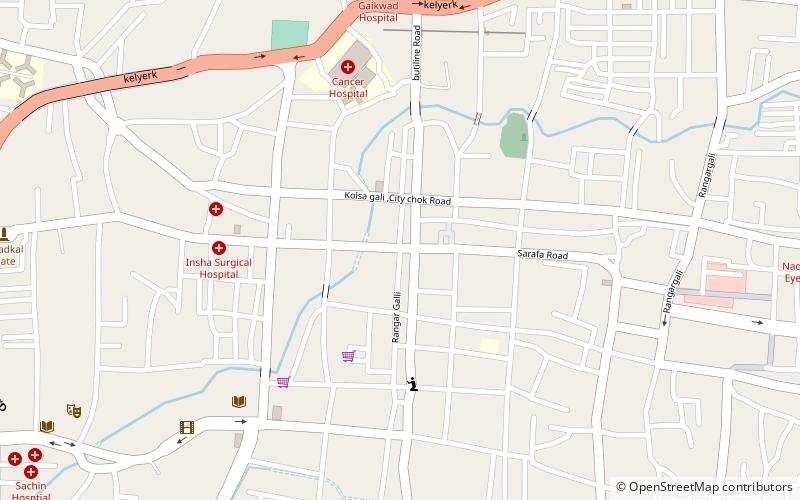Bibi Ka Maqbara, Aurangabad
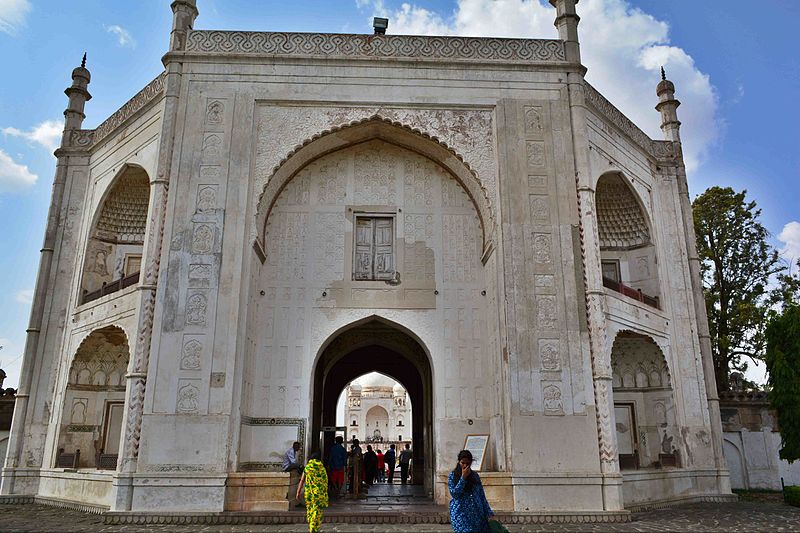
Facts and practical information
Nestled in the vibrant city of Aurangabad, India, stands the historic monument Bibi Ka Maqbara, a testament to the Mughal era's architectural grandeur. Often referred to as the 'Taj of the Deccan,' this 17th-century mausoleum was commissioned by the Mughal Emperor Aurangzeb in memory of his wife, Dilras Banu Begum.
The structure is an exquisite example of Mughal architecture, mirroring the design elements of the more famous Taj Mahal in Agra. Despite its resemblance, Bibi Ka Maqbara offers a unique experience with its serene ambience and less crowded environs. It features a central dome surrounded by four minarets, an impressive gateway, and well-manicured gardens that spread across the complex, inviting visitors to enjoy a peaceful stroll.
The monument's main dome is constructed from marble, which stands out against the mainly plastered walls. Intricate stucco work and detailed carvings adorn the mausoleum, showcasing the craftsmanship of the artisans of the time. The interiors house the tomb of Dilras Banu Begum, which is a simple yet elegant cenotaph.
Tourists visiting Bibi Ka Maqbara can also explore the small archaeological museum located within the complex, providing insights into the region's rich history. The site is open to visitors throughout the week, and the entry fee is nominal, making it accessible for all types of travelers.
To fully appreciate the beauty of Bibi Ka Maqbara, it is recommended to visit during the early morning or late afternoon when the soft sunlight enhances the monument's allure. Photography enthusiasts will find plenty of picturesque spots to capture the essence of this historical site.
Bibi Ka Maqbara – popular in the area (distance from the attraction)
Nearby attractions include: Aurangabad Caves, Panchakki, Dr. Babasaheb Ambedkar Marathwada University, Neighborhoods of Aurangabad.
